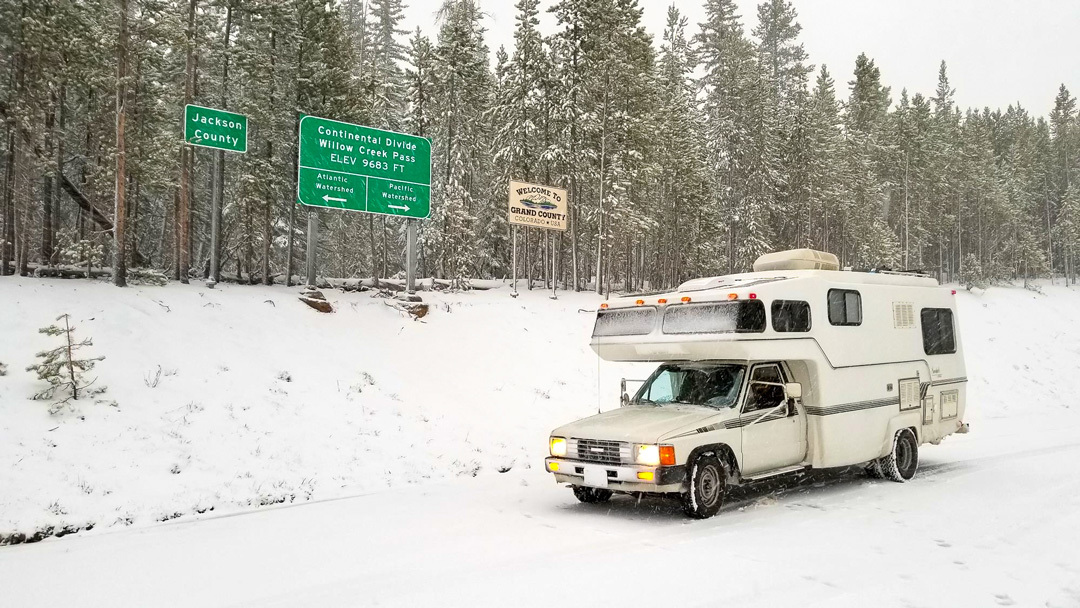In extreme conditions, one of the most important things to have is a reliable power source. If you want to know what battery is best for your situation, you should first know how cold weather affects them. Off-grid living can become treacherous when the temperatures drop below freezing, and you want to know that you have your necessities covered. Lead-acid batteries tend to have a lower performance rate than their lithium counterpart. This makes lithium batteries a top power source for anyone wanting to explore places where the temperatures drop to frigid conditions.

Lifepo4 batteries are safe to use in temperatures ranging from -4 degrees Fahrenheit, up to 140 degrees Fahrenheit, which makes them practical for use in any weather conditions. Some off-grid solar, RV, and Camper Van owners live and venture into extremely cold conditions, making lithium batteries a great option for consistent, reliable power. Cold temperatures must be taken into account for any battery owner as they can be harmful to the well-being of a battery. With standard lead-acid batteries the cold can seriously degrade the health and longevity of the unit. Lithium batteries have much better performance at colder temperatures than lead-acid batteries. Typically, the more you pull from a lead-acid battery in cold temperatures the weaker it will become. LFP batteries warm up when you use them, lowering the battery's resistance and increasing its voltage. When looking to upgrade or overcome your battery troubles, lithium is the clear winner when it comes to cold weather.
Cold weather does affect battery life, even with lithium batteries. Temperatures below the 32 degrees mark will reduce both efficiency and usable capacity of lead-acid noticeably, providing 70-80% of its rated capacity. at the same temperature lithium batteries can operate with very little loss providing 95-98% of their capacity.
When charging at above-freezing temperatures, the lithium ions inside the battery are soaked up as in a sponge by the porous graphite that makes up the anode, the negative terminal of the battery. Below freezing, however, the lithium ions aren’t efficiently captured by the anode. Instead, many lithium ions coat the surface of the anode, a process called lithium plating, which means there’s less lithium available to cause the flow of electricity and the battery’s capacity drops. Charging below freezing at an inappropriate charge rate, also causes the battery to become less mechanically stable and more prone to sudden failure.
In freezing charging conditions, lithium ions get lost navigating their way to “work” within the graphite anode. Instead of intercalating, these ions end up plating the surface of the anode. Charging in freezing temps can cause plating, which reduces battery capacity and increases resistance. If enough plating builds up, it can puncture the separator and create a dangerous short inside the cell.
Charging in cold weather calls for a different protocol and is crucial when you want to make your investment last. Nearly every battery requires a more involved charging process when the temperature begins to drop. Lead-acid has a tighter range of suitable charging conditions when compared to lithium. Both, however, need to be within their temperature range and must be charged at a slower than normal rate.
The damage to the battery when charging at colder temperatures is proportional to the charging rate. Charging at a much slower rate can reduce the damage, but this is rarely a practical solution. When temps fall between 32 degrees and 14 degrees Fahrenheit, batteries cannot be charged at higher than .1C. When temps fall between 14 degrees and -4 degrees Fahrenheit, batteries cannot be charged at higher than .05C. These charging rates will definitely increase charging duration and complicate the entire process because you may not know how cold it could become during a charging cycle. In some situations, you could be going to sleep in 40-degree weather and waking up to a cold snap at 18 degrees Fahrenheit. If you were charging at a higher rate overnight, the falling temperatures could cause irreversible damage to your battery.
The number one rule when it comes to cold-weather charging is not to charge your batteries when the temperature falls below freezing without reducing the charge current. Unless you're BMS communicates with your charger, and the charger has the ability to react to the data provided, this can be difficult to do. If you do charge below freezing temperatures, you must make sure the charge current is 5-10% of the capacity of the battery.
Previous:Sungrow Achieves Record-Breaking Delivery: Bramley 331MWh BESS Project Goes Live in Just Two Weeks
Contact Person: Miss. Elsa Liu
| WhatsApp : | +8617763274209 |
|---|---|
| Skype : | +8617763274209 |
| WeChat : | 17763274209 |
| Email : | Elsa@lifepo4-battery.com |